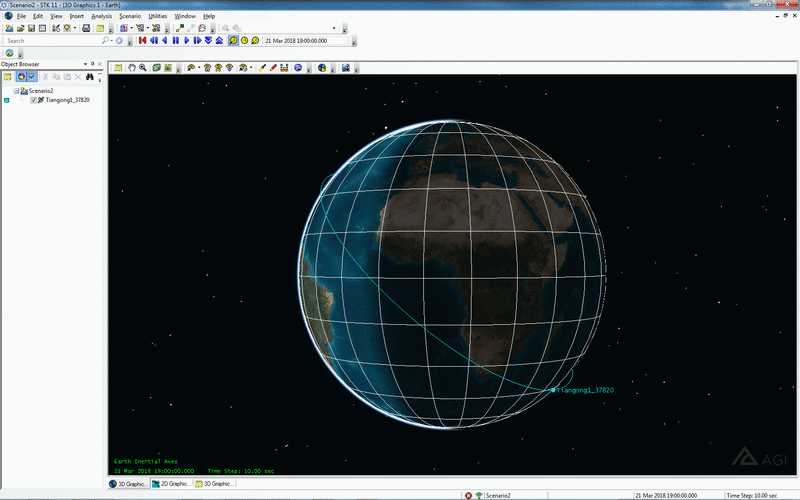Racooke, not clear what you are asking, so I'm probably rambling a bit here:
What causes orbital perturbations? A couple of things - gravity tides from the moon and sun will tend to pull on a spacecraft in a purely equatorial orbit, shifting its orbital plane over time. Also the gravity field of earth is not uniform, there are some significant mass concentrations (google image search for earth gravity map) that perturb spacecraft orbits.
But Tiangong was not in a purely equatorial orbit, it was launched at a latitude some distance above the equator, so it orbits at an angle to the equator. Not all spacecraft are launched due east, necessarily, they are launched and gain velocity in whatever direction you want the final orbit to be in, or whatever vector the rocket engines pushed in, hopefully those were the same. If launched from say, 45 deg. N, earth's rotation only gives you some 70% of the eastward velocity vector that you get at the equator, which is significant, but it's still only a fairly small fraction of the velocity needed for a stable orbit. And remember, the orbit has to be centered on earth's mass, so if you launch :due east" from 45N, you will still end up in an orbit with at least 45 deg. of inclination, your extra east velocity ends up pushing your orbit inclination more northerly. You might need to grab a ball and some rubber bands to help you visualize it, or a good map with "great circle" shipping/flying routes shown on it. In general, the minimum fuel to low orbit puts you in an orbit with an inclination close to the launch latitude.
FWIW, it's not "intuitive", it takes a bit of study and/or practice. Watching my kids figure out Kerbal Space Program was a lot of fun - and I was surprised how quickly they started to figure this stuff out. Now #2 son is off doing some programming to put KSP-type interfaces to work for real spacecraft.



![[wink] [wink] [wink]](/data/assets/smilies/wink.gif)
